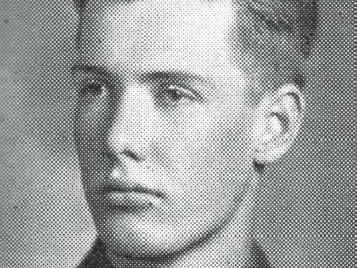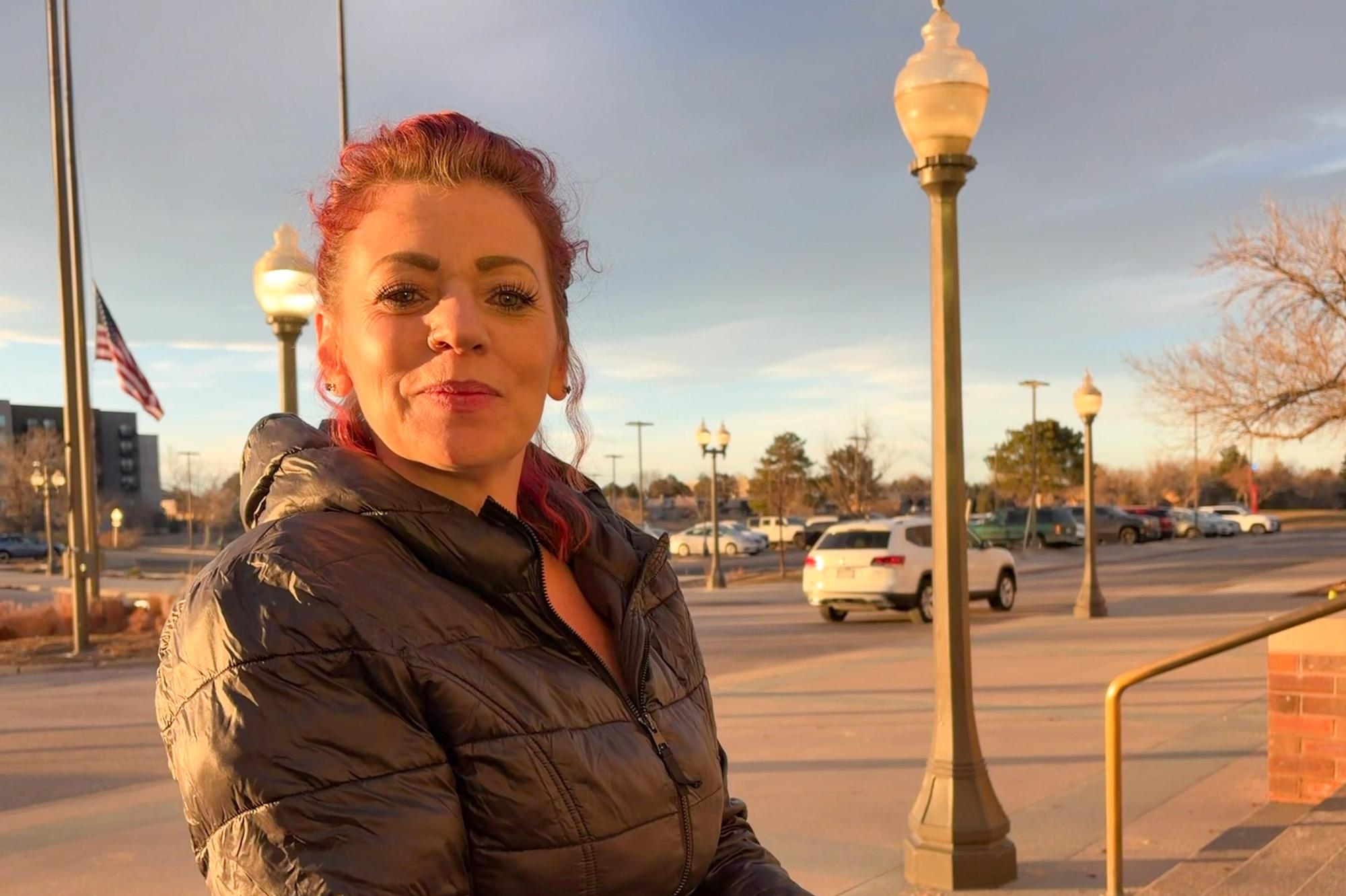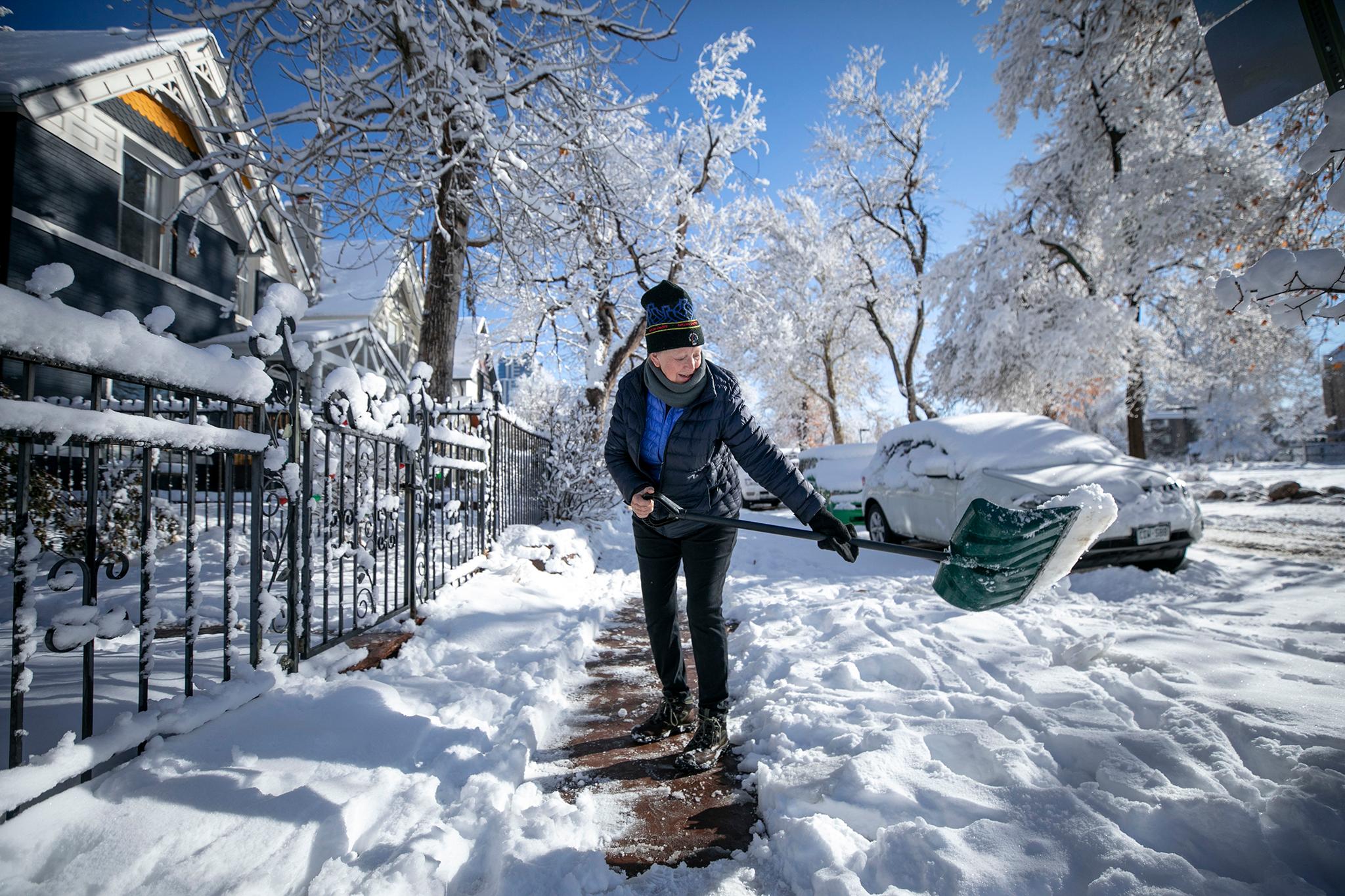

Author Paul N. Herbert, who writes about this history in his new book: "Treason In The Rockies," spoke with Colorado Matters host Ryan Warner.
Read an excerpt:
It was never explained why someone wanting to get caught would go to the trouble and expense of purchasing women’s clothes to be used as a disguise, which Maple did the weekend before the escape. He later admitted the scarf and sweater were intended as a disguise for one of the prisoners. Since the purchase was made just before Valentine’s Day, the merchant in Salida assumed Maple wanted the items gift wrapped. At Bateman’s Hardware shop, “Pat” Patterson struck up a friendly conversation with one of the two American soldiers who came into his store just as he was closing on February 12, 1944. He later remembered the conversation because one of the customers, the one looking but not buying, mentioned he had once worked in Newcastle, Pennsylvania. Patterson had also once worked in Newcastle. Patterson recalled the details later at Maple’s court-martial trial. The soldier doing the buying—Maple—bought fishing gear, .22 cartridges and three sets of infantry insignia. The Colorado History Center has a glossy photograph of a dapper looking Patterson, who sent the photograph and a letter to New Yorker writer E.J. Kahn when Kahn was doing research for his 1950 magazine article. Patterson remarked in his letter to Kahn that he was the last living Salida merchant who had testified at Maple’s trial. Maple bought a man’s hat, size 7 1/8, for $4.95. Weeks later, when the subject of the hat purchase came up at trial, however, the cashier at the Golden Rule Merchandising Company wasn’t able to state with certainty who had purchased the hat or whether the hat shown to her at trial was the hat she sold to Dale Maple. First stop on the trip after leaving Camp Hale was the town of Salida, about seventy miles away. The trio stopped at the Y&R Garage to pick up car license plates and a gas ration book. For reasons unknown to the author, these items were not provided to Maple when he bought the car. Fritz Owen, the counter employee at Y&R when Maple arrived at about 2:30 p.m., didn’t know anything about anyone picking up tags and a gas ration book. Maple told him he was on furlough and in “sort of a hurry.” Owen looked around and under the counter. He quickly found the items. He turned them over to Maple, who paid $9.85 and got back on the road. Owen noticed there were other people in the Reo. Maple was in a hurry, but little could he have known that it took more than a day for the prisoners’ absence to be noted back in camp. An American soldier going AWOL was one thing and might not have attracted immediate attention; but going AWOL with two prisoners of war would set off alarms. Part of the delay in noticing the prisoners had fled resulted from a change in commander that day at the prison stockade. The regular commander had received a telegram the morning of February 15, ordering him to drop everything and head immediately to Camp Trinidad. His replacement, Second Lieutenant Robert Dawson, arrived in the early afternoon. Dawson later claimed the prisoners at the camp were all checked in, as usual, at 5:30 p.m. on the fifteenth, but no one noticed two of them missing. It wasn’t until the next morning that someone realized Schwichtenberg and Kikillus weren’t there. Dawson spent about three and a half hours on the morning of February 16 searching for the prisoners throughout the stockade and camp. He wanted to make absolutely sure they were really missing before he reported them missing. It wasn’t until late Wednesday afternoon that the army reported a soldier and two prisoners had escaped. By that time, the escapees were well on their way to the border. The escape itself and the secrecy and the urgency to get away quickly directly conflict with Maple’s later assertions that he wanted to get caught. Why would someone wanting to be caught tell the counter man at Y&R Garage that he was in a hurry? Why would someone wanting to be caught take steps to conceal his escape? Perhaps Maple’s claims about wanting to get caught were a lie. But then, perhaps, as Maple claimed, he really believed that getting caught in what appeared to be a sincere escape attempt would garner more publicity than a feeble attempt. All we have are written records. Maple’s only statements about this were during his trial, when he had an incentive to lie to protect himself. The travelers had a flat tire near Española, New Mexico, about thirty five miles north of Santa Fe. They slept in their car. The next day, after the tire was repaired at a filling station, they drove through Santa Fe and Albuquerque to Hatch, New Mexico, on Highway 85. At about this point in the journey—it’s not precisely clear when or where—they had another flat tire that they couldn’t repair. So they continued driving on the rim with a flat tire. To help evade detection, they drove only at night and rested during daylight hours. Along the way they passed near Bernalillo and Doña Ana, two towns they would see later. Turning southwest they headed to Deming, New Mexico, which increased the length of the trip but got them off the road where authorities would be expected to be looking for them. Except for about an hour, Maple did all the driving on the trip. Not much more of note happened until they got to Deming, where Maple drove the car off the road and into a ditch. Maple later claimed he intentionally drove into the ditch to attract attention and get detained, but alas, no matter how hard he tried he couldn’t get anyone to arrest him. It didn’t go unnoticed later, however, that contrary to his claims, Maple took evasive measures, such as getting off the main road to avoid detection, as the travelers got near the Mexican border. Someone wanting to be noticed wouldn’t take clandestine actions to go unnoticed. At about one thirty in the morning of February 17, an off-duty U.S. customs employee named John Breen saw the Reo in a ditch, about seven miles south of Deming. Breen was driving south from Deming to Columbus, and at this point, he had not heard anything about the escape. He pulled over to help. Breen talked to the man in the ditch standing outside the car. After some discussion about getting the car out of the ditch, Breen pulled his car, a 1942 Buick, bumper-to-bumper with the Reo. The bumpers lined up nicely, allowing Breen to push Maple’s car far enough—about a hundred yards—to jump-start it. Maple was back on the road to Mexico, followed by an off-duty lawman who happened to also be heading south on the same road. Breen followed the Reo for seven or eight miles and eventually passed it, noting the driver of the car didn’t turn the headlights on until Breen passed. During the pre-push discussion, Breen suspected something amiss. He observed what he thought were passengers in the car, a woman with a baby in her arms in the front seat and another person in back. But it was too dark to be sure. The lawman with twenty-four years’ experience, however, suspected enough to write down the car’s license tag number. That might have been the end of the Breen connection except that about six hours later, on the very same road, Breen saw the Reo again. This time it was parked, empty and (unknown to Breen) out of gas, about seventeen miles from the Mexican border, about five to six miles farther south than where Breen passed it the night before. He double checked to confirm the Reo’s license plate matched his scribbled notes from the night before. A couple of hours earlier, when the Reo ran out of gas, the trio walked for a few miles before sleeping by the side of the road for the night. The next day, they hiked across the border and made it about two or three miles into Mexico, the apogee of their expedition, before being apprehended by Mejía. An army report later summarizing the case mentioned there was good reason to believe someone in Columbus, New Mexico, helped Maple get to Mexico, a lead the army didn’t pursue, pointing out it was the FBI’s jurisdiction to investigate civilians. |









